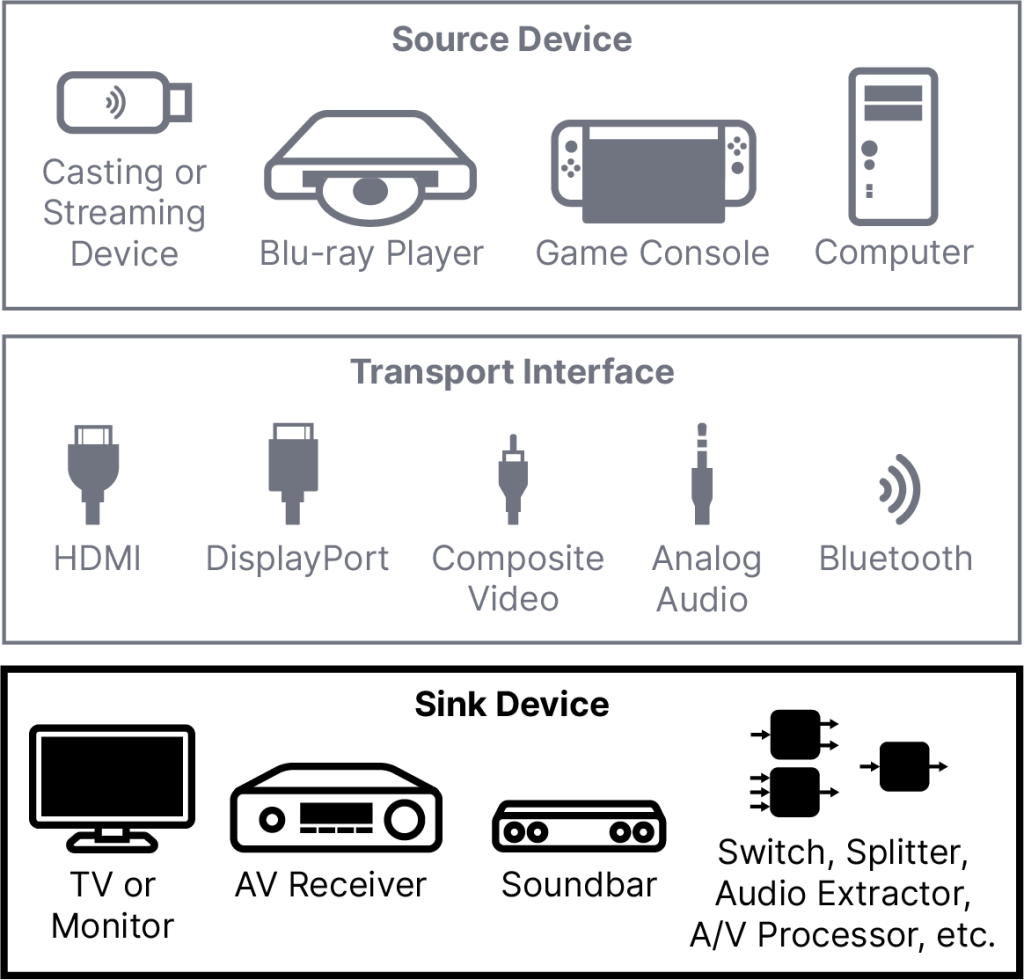AV Latency.com helps reviewers accurately report audio/video latency, AV sync error, and input lag of consumer electronics.
Accurately measure HDMI or S/PDIF audio latency with the free and open source
AV Latency.com Toolkit!
Introduction
When using consumer electronics there is sometimes a delay, or lag, between physical input and the resulting sound and light output. In the case of a video game console, most of this latency is entirely outside of the consumer’s control and only the “sink device” latency can be reduced through choice of display or sound system. This sink device latency is the focus of this website, rather than the source device or transport interface.

Video latency definitions on this website apply to consumer electronics technologies with raster scanning (or similar) video transport interfaces that are commonly used for home entertainment, video games, computer workstations, and esports. Professional technologies, such as those for music production or live performance, are not the focus of this website, but some of the terminology and test methods may still be useful.

Getting Started
Check out the Terminology page before learning about different ways to measure latency. If you’re interested in measuring audio latency, then Acceptable Audio Latency and AV Sync Error provides some information on why the best audio latency is one that most closely matches video latency.
About the Author
Allen Pestaluky is a video game developer who is most known for co-creating Keep Talking and Nobody Explodes. He has also made a 3D video game engine that renders to an analog oscilloscope. For many years he has had a passion for measuring latency and developing accessible methods for testing that anyone can use.